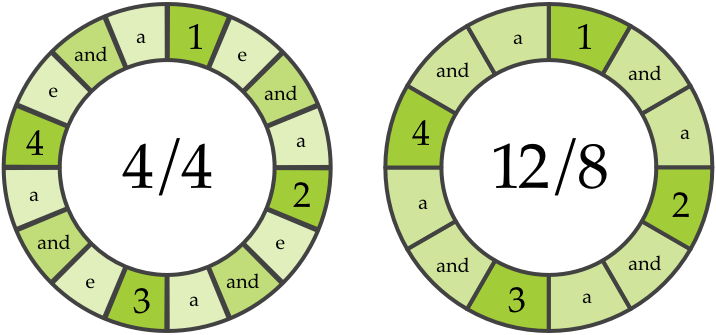In this article, Ethan Hein deconstructs the track "Ultralight Beam" off of Kanye West's latest release The Life of Pablo, and looks at the music theory behind the song and why it works structurally.
__________________________
Guest Post by Ethan Hein on Soundfly's Flypaper
The first song on Kanye West’s The Life of Pablo album, and my favorite so far, is the beautiful, gospel-saturated “Ultralight Beam.”
The song uses only four chords, but they’re an interesting four: C minor, E♭ major, A♭ major, and G7. To find out why they sound so good together, let’s do a little music theory.
“Ultralight Beam” is in the key of C minor, and three of the four chords come from the C natural minor scale, shown below.
Play around with the concepts discussed in this article using the interactive keyboard from our course “Theory for Bedroom Producers.” Each image below links to the aQWERTYon where you can play the scale being discussed (note: it only works in Chrome).
Click to play the aQWERTYon
To make a chord, start on any scale degree, then skip two degrees clockwise, and then skip another two, and so on. To make C minor, you start on C, then jump to E♭, and then to G. To make E♭ major, you start on E♭, then jump to G, and then to B♭. And to make A♭ major, you start on A♭, then jump to C, and then to E♭. Simple enough so far.
The C natural minor scale shares its seven notes with the E♭ major scale:
All we’ve really done here is rotate the circle three slots counterclockwise. All the relationships stay the same, and you can form the same chords in the same way. The two scales are so closely related that if you noodle around on C natural minor long enough, it starts just sounding like E♭ major. Try it!
The last of the four chords in “Ultralight Beam” is G7, and to make it, we need a note that isn’t in C natural minor (or E♭ major): the leading tone, B♮. If you take C natural minor and replace B♭ with B♮, you get a new scale: C harmonic minor.
If you make a chord starting on G from C natural minor, you get G minor (G, B♭, D). The chord sounds fine, and you could use it with the other three above without offending anyone. But if you make the same chord using C harmonic minor, you get G major (G, B, D). This is a much more dramatic and exciting sound. If you add one more chord degree, you get G7 (G, B, D, F), known as the dominant chord in C minor. In the diagram below, the G7 chord is in blue, and C minor is in green.
Feel how much more intensely that B♮ pulls to C than B♭ did? That’s what gives the song its drama, and what puts it unambiguously in C minor rather than E♭ major.
“Ultralight Beam” has a nice chord progression, but that isn’t its most distinctive feature. The thing that jumps out most immediately is the unusual beat. Nearly all hip hop is in 4/4 time, where each measure is subdivided into four beats, and each of those four beats is subdivided into four sixteenth notes. “Ultralight Beam” uses 12/8 time, which was prevalent in the first half of the twentieth century, but is a rarity now. Each measure still has four beats in it, but these beats are subdivided into three beats rather than four.
Click to play the aQWERTYon
The track states this rhythm very obliquely. The drum track is comprised almost entirely of silence. The vocals and other instruments skip lightly around the beat. Chance the Rapper’s verse in particular pulls against the meter in all kinds of complex ways.
The song’s structure is unusual too — a wide departure from the standard “verse-hook-verse-hook” form.
The intro is six bars long, two bars of ambient voices, and four bars over the chord progression. The song properly begins with just the first half of the chorus (known in hip hop circles as the hook.) Kanye has an eight bar verse, followed by the first full chorus. Kelly Price gets the next eight-bar verse. So far, so typical. But then, where you expect the next chorus, The-Dream gets his four-bar verse, followed by Chance the Rapper’s ecstatic sixteen-bar verse. Next is what feels like the last chorus, but that’s followed by Kirk Franklin’s four-bar verse, and then a four-bar outro with just the choir singing haunting single words. It’s strange, but it works. Say what you want about Kanye as a public figure, but as a musician, he is in complete control of his craft.






